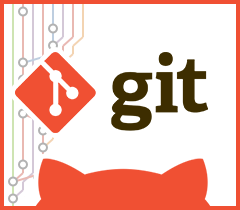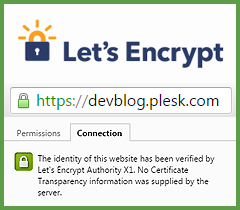Research day
In this article we will tell you exactly what we mean by the practice of Research Day in our company, how it works, and what the developers came up with while they were “resting” from the main tasks.
What is Research Day with us
Research Day is a legalized “Research Day” - one day in two weeks, when engineers are released from their work and spend their time on learning new technologies, creating prototypes, searching for alternative solutions and everything that usually doesn’t have time or is difficult to predict.
')
When you run this program, of course, the experience of LinkedIn, Apple, Google, Microsoft, which have similar programs that differ in different degrees of "freedom" for the employee, was taken into account. As many will remember, the “20% rule” introduced by Google allowed its employees to create Gmail, Google Maps, AdSense, etc. However, Google later added specific explanations to this program: the development must have a certain development vector. At present, this practice is considered to be almost extinct in Google, since The introduction of compulsory coordination with managers of the right to use these 20% of working time could not but affect the motivation of employees who wish to participate in this.
Employees spend 10% of their time on Research Day every month, while having the opportunity to increase their competence, look for interesting ideas and solutions for everyday tasks, work with technology that is not currently used in the project, but could be useful. Well, and most importantly, the possibility of creative self-realization in regular and paid time. Engineers can also spend their efforts on improving development processes and tools. This is especially important for companies like Plesk, where engineers have been working on the same product for several years, and changing the technology stack is always a sore point.
How it works
Technically, the program works like this: first, engineers put ideas into the document that they would like to work on on such a day (usually Friday). Since this document is public, they can find like-minded people and work together on the project, after which the work itself is done and the next working day the team is going to sum up.
Statistics show that about 80% of employees actively participate in Research Day, 95% support this initiative and consider it a plus to have this opportunity. In their opinion, it helps to make work more efficient and less routine, as well as to master new technologies and services during working hours. Employees who are not participating in Research Days prefer to do their current tasks and not spend their working time on third-party projects.
What we got as a result
 In less than a year, more than a hundred studies were carried out aimed at improving a number of internal services, improving the code in a product, introducing new tools into development, replacing less efficient ways with more efficient ones. For example, during Research Day, the Gitman extension (“push-to-deploy” support in Plesk) was born, providing basic functionality for site deployment and managing the Git repository. A docker image for Plesk was also created.
In less than a year, more than a hundred studies were carried out aimed at improving a number of internal services, improving the code in a product, introducing new tools into development, replacing less efficient ways with more efficient ones. For example, during Research Day, the Gitman extension (“push-to-deploy” support in Plesk) was born, providing basic functionality for site deployment and managing the Git repository. A docker image for Plesk was also created.  Another good example of what was created during the Resesrch Days is the integration with the Let's Encrypt service , which allows you to put an SSL certificate in the Plesk control panel. This can be done absolutely free of charge and literally in a couple of clicks. Despite the efforts of the guys from Let's Encrypt, integration was not trivial. The internal kitchen for working with SSL certificates is not a simple topic in principle. Yes, and some things just raw, for example, work on Windows.
Another good example of what was created during the Resesrch Days is the integration with the Let's Encrypt service , which allows you to put an SSL certificate in the Plesk control panel. This can be done absolutely free of charge and literally in a couple of clicks. Despite the efforts of the guys from Let's Encrypt, integration was not trivial. The internal kitchen for working with SSL certificates is not a simple topic in principle. Yes, and some things just raw, for example, work on Windows.But research days are not just writing code. This is the time that a person can spend on creating an article for DevBlog of a company or, for example, articles for Habr or preparing speeches for Tech Talk, which we try to regularly spend inside the company.
Some ideas before the introduction of Research Days for years hung in the TODO-list. Accordingly, the introduction of such days allowed to get things off the ground. For example, in the rooms of developers hang TVs that show some useful information. Initially, the slides were created in some free time and were quite dull. However, the largest surge in development activity occurred precisely in Research Days. Moreover, not only work-related slides, but also entertaining ones appeared on TV broadcasts. For example, in one of the rooms windows go to the section of the highway, where accidents constantly occur. They put the camera, implemented the recording, cutting into fragments and a periodic demonstration on TV. On the one hand, it seems to be pure entertainment, on the other hand, if you think such slides can keep people interested in looking at the TV (and there, it sometimes shows, for example, who broke the assembly or what functionality is being prepared today for delivery / demonstration).
About the buns
 In order for the process to work more efficiently and to be able to get results in one or another experimental direction, additional motivators in the form of prizes are used periodically. There is a list of ideas, the successful implementation or study of which can give, for example, a coupon for CodeSchool or a trip to an IT conference.
In order for the process to work more efficiently and to be able to get results in one or another experimental direction, additional motivators in the form of prizes are used periodically. There is a list of ideas, the successful implementation or study of which can give, for example, a coupon for CodeSchool or a trip to an IT conference.Summarize
This program, on the one hand, allows employees to unleash their creative potential, improve existing methods of work, find new solutions and tell other engineers about this, which in turn will help them improve their work. On the other hand, it is a way to increase employee loyalty to the company and direct their efforts towards product development.
If you have experience in conducting similar “Research Days”, it will be very interesting for us to learn about them - we are waiting for your comments!
Source: https://habr.com/ru/post/275625/
All Articles